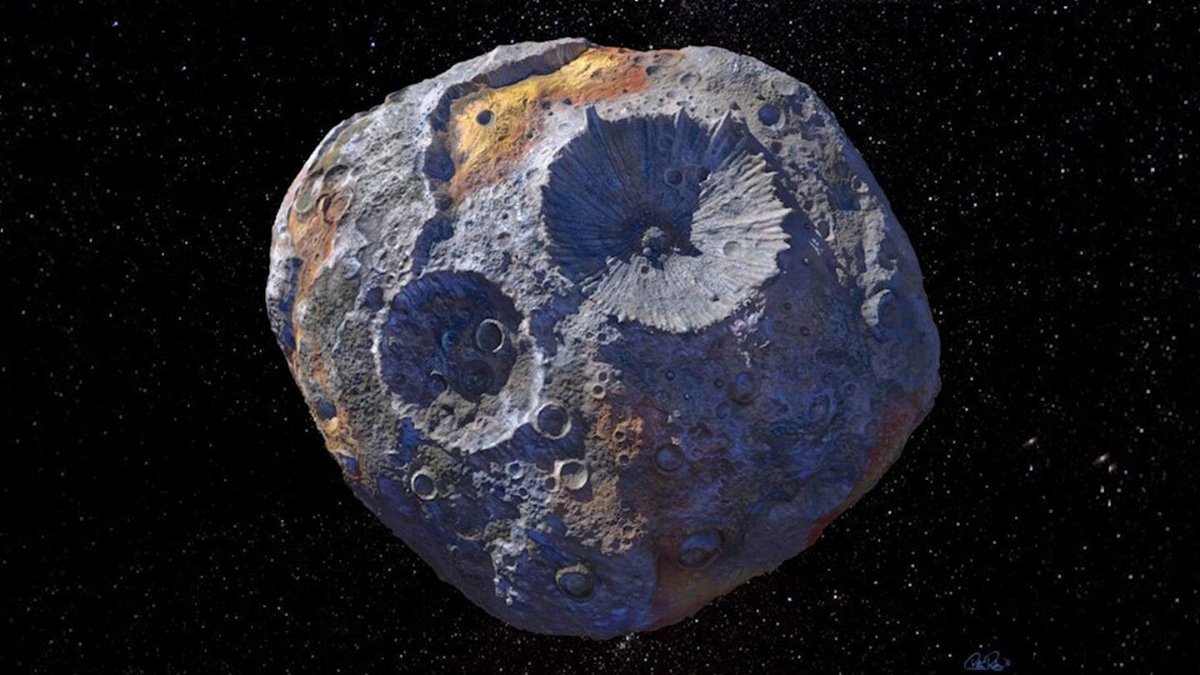NASA’s Psyche mission will launch to an unexplored metal world this fall

This rendering shows how scientists think the Psyche asteroid appears up close.
By Ashley Strickland, CNN
(CNN) — The first NASA spacecraft designed to study a metallic asteroid is now set to launch in October, according to a Monday announcement made by the agency.
The endeavor, known as the Psyche mission, was originally expected to lift off in 2022. But the launch window opened on August 1 and closed October 11 before the spacecraft’s flight software was ready.
During testing at NASA’s Jet Propulsion Laboratory in Pasadena, California, engineers discovered a compatibility issue in the software’s test bed simulators. The issue was corrected, but there wasn’t enough time for a full checkout and launch in 2022.
An independent review board has found that steps taken by NASA and the California Institute of Technology to get the delayed mission back on track, including work on the mission as well as institutional steps, have been “outstanding,” according to the announcement.
The review board, which convened last summer when delays became evident in June 2022, provided a report with recommendations to NASA in November. The analysis included ways to address issues with the mission as well as “JPL institutional issues” that caused the delay.
“We convened this board weeks after I stepped in as director and addressing the issues it raised has been a central focus in my first year as director of JPL. The results are gratifying,” said JPL Director Laurie Leshin in a statement. “Our goals went beyond getting Psyche to the launch pad to improving JPL across the board as we work on missions that will help us better understand Earth, explore the solar system and the universe, and search for signs of life.”
Getting Psyche on track
Engineers wanted to be absolutely certain that the software would function as expected once the spacecraft takes flight. The guidance and navigation software help to control the spacecraft’s orientation as it flies through space and point its antenna toward Earth for communications and relaying data. That software also provides the spacecraft’s propulsion system with trajectory information.
“The project is very nearly through all the key software testing that was the main challenge at the time of the delay, and that has gone well and the team is on track within margin,” Leshin said. “Our team is heading to Florida to begin the final testing of the spacecraft in preparation for launch. I’m very pleased to report it’s green across the board and on track for our October launch.”
The Covid-19 pandemic contributed to the delay, according to the report, but the board also determined that staffing, management oversight and communication caused impediments.
In response, JPL made a number of changes to get the Psyche mission ready for launch, including reorganizing its workforce, updating a hybrid work policy to have the team spend more time together, and adding experienced team members to the mix.
“The independent review board is extraordinarily impressed by the accomplishments of the total JPL organization and Caltech,” the report noted. “Engagement in and leadership of the overall response process by the JPL director and senior leadership is deemed ‘world class.’” (The California Institute of Technology manages JPL on behalf of NASA.)
“I am pleased with the independent review board’s resoundingly positive assessment of JPL’s hard work in correcting the issues outlined in the board’s original report,” said Nicola Fox, associate administrator of NASA’s Science Mission Directorate, in a statement. “We know the work is not over. As we move forward, we will work with JPL to ensure these implemented changes continue to be prioritized to position Psyche and the other missions in JPL’s portfolio for success.”
Psyche’s impending journey
The spacecraft will embark on a 280 million-mile (450 million-kilometer) journey and reach the asteroid, also named Psyche, in August 2029, and orbit it for 26 months.
The Psyche asteroid is so metal-rich, some scientists believe it’s the exposed core of a planetesimal, or a planet in the making that separated into layers.
Collisions with other celestial objects over time might have stripped away the outer layers, exposing the remaining metallic core. If Psyche truly is a core, studying it would be like peering inside the very heart of a planet like Earth.
The potato-shaped asteroid only appears as a fuzzy blur to ground- and space-based telescopes. The unusual object could also be a piece of primordial material that never melted, according to NASA.
The-CNN-Wire
™ & © 2023 Cable News Network, Inc., a Warner Bros. Discovery Company. All rights reserved.


